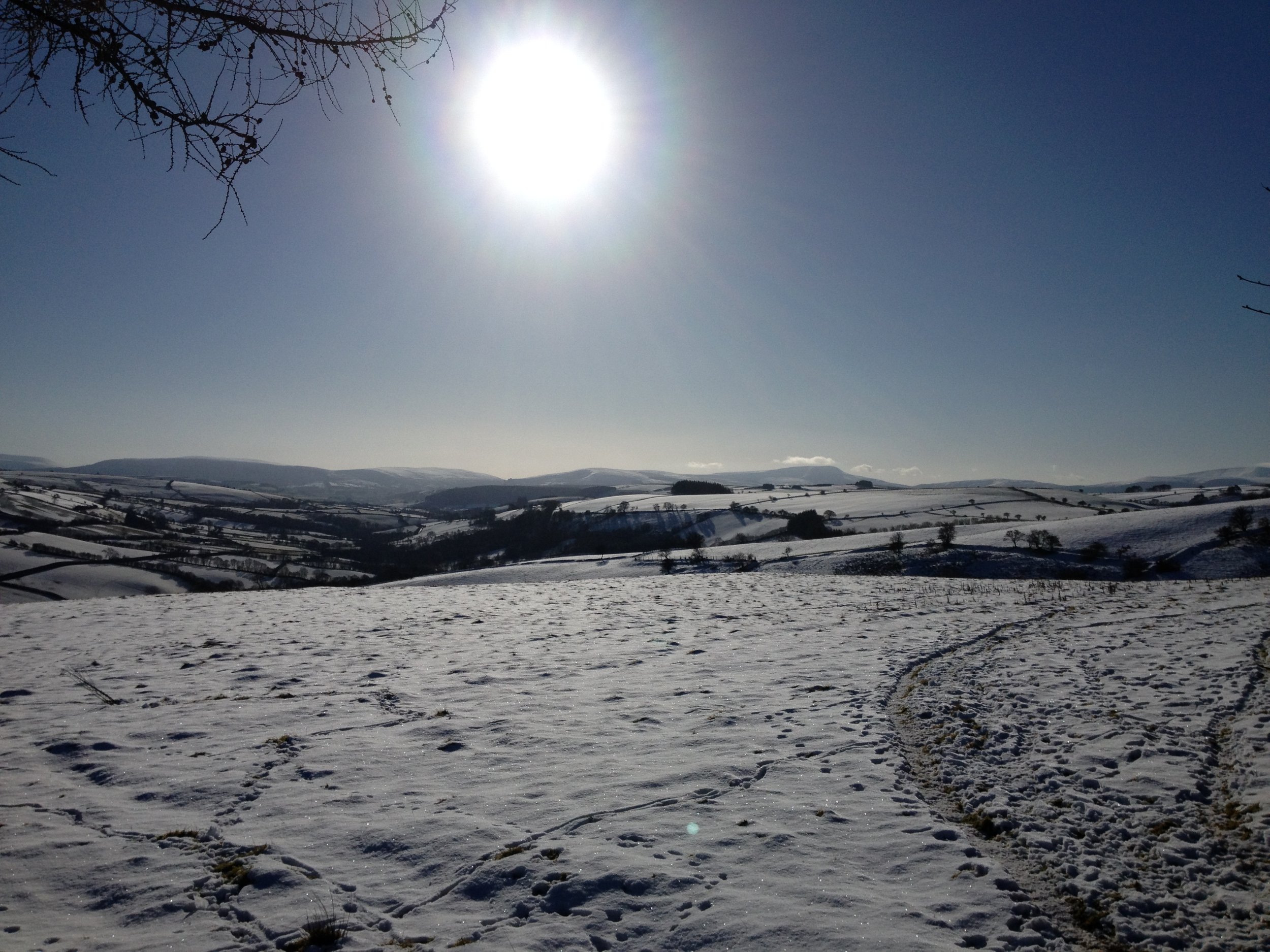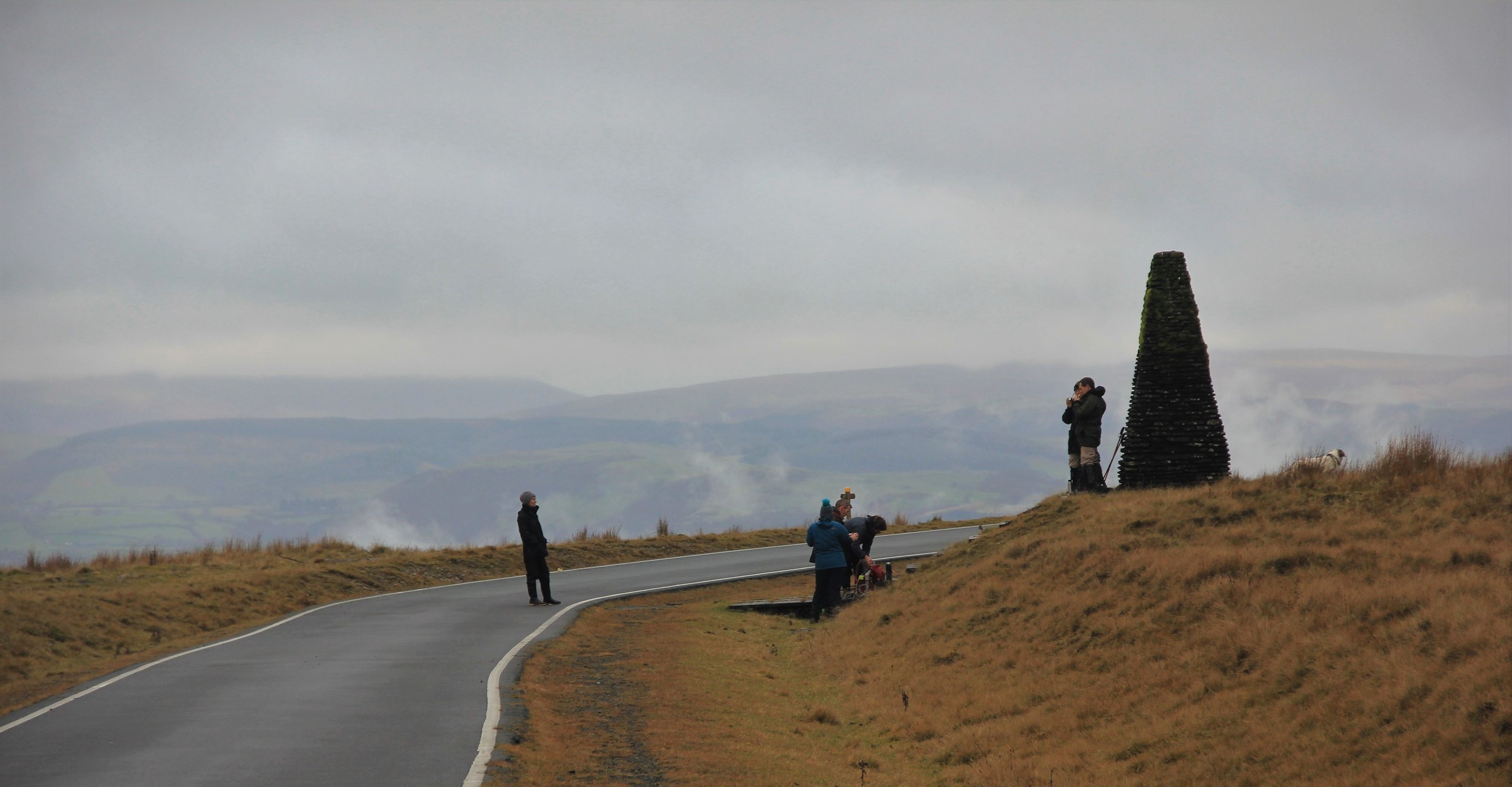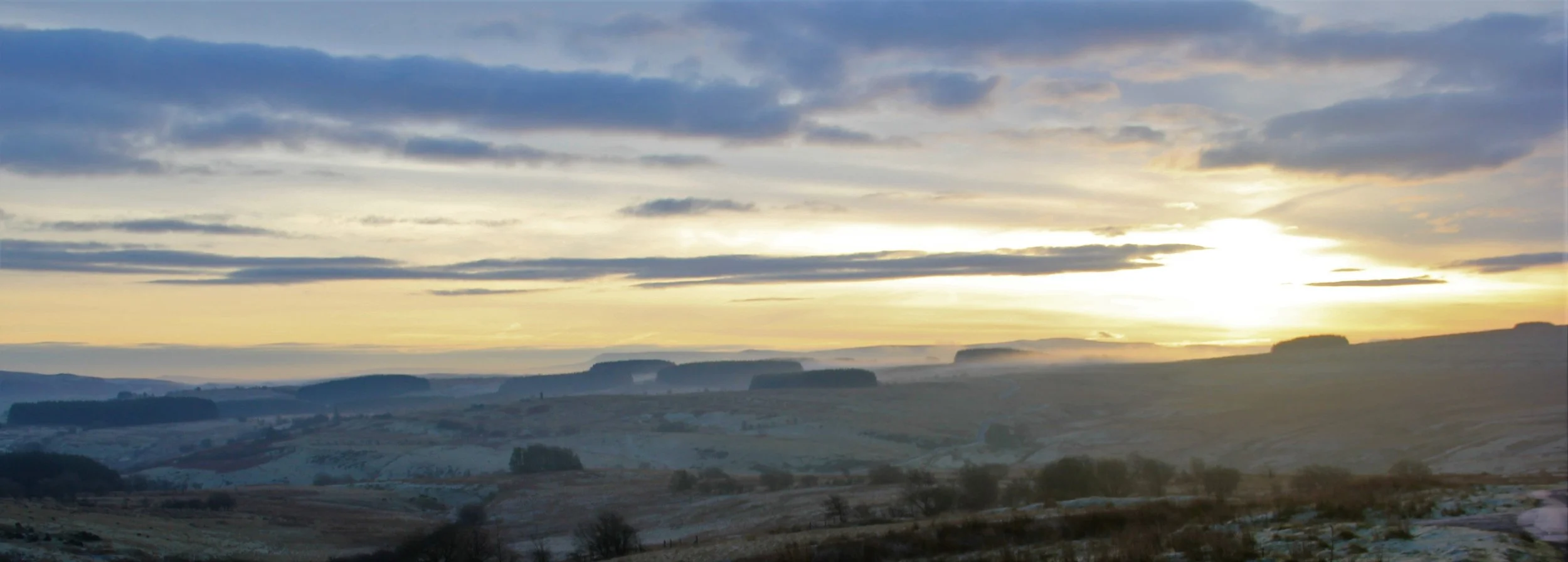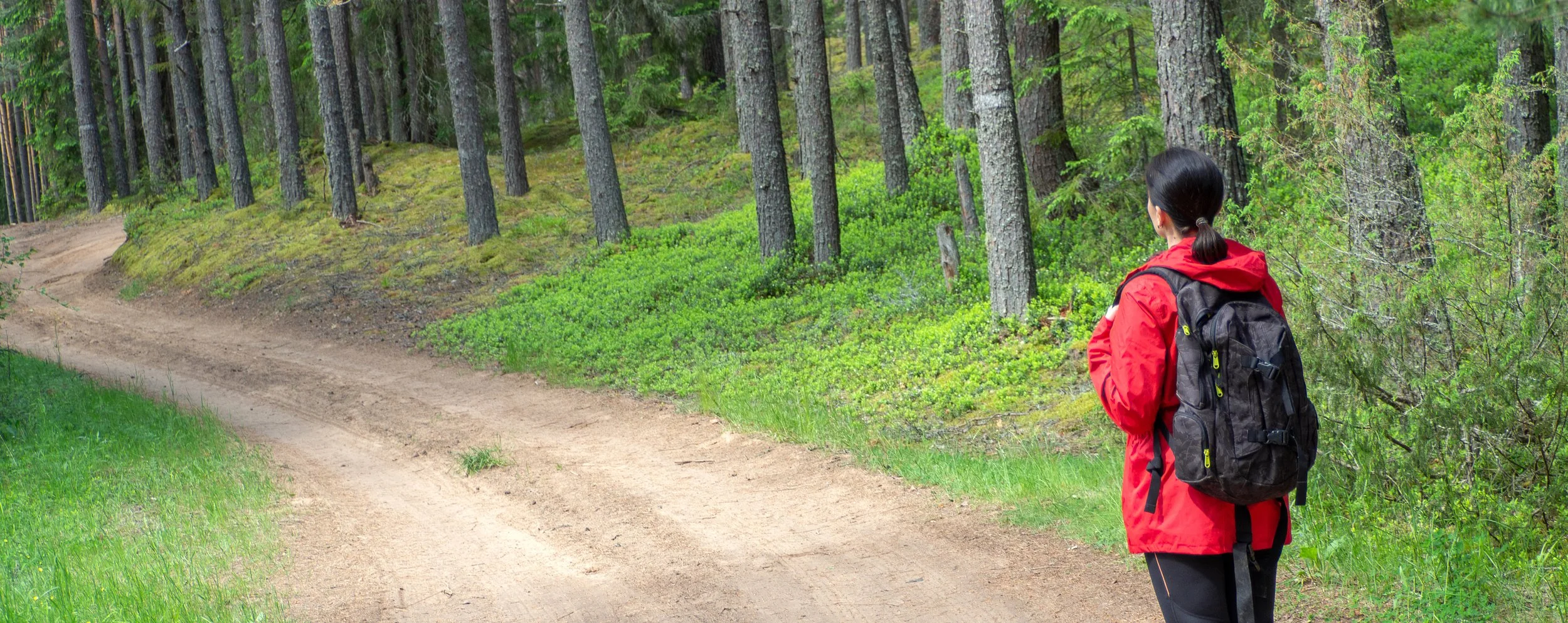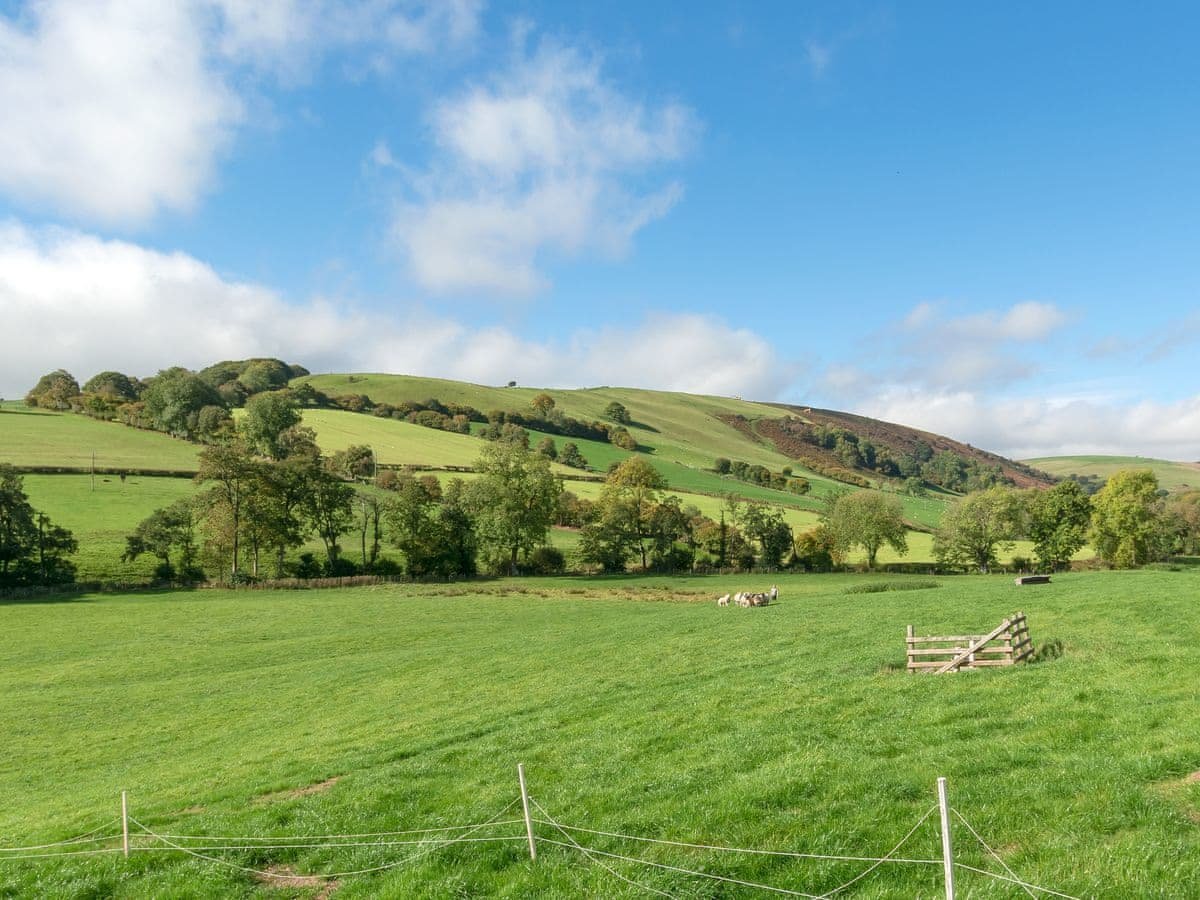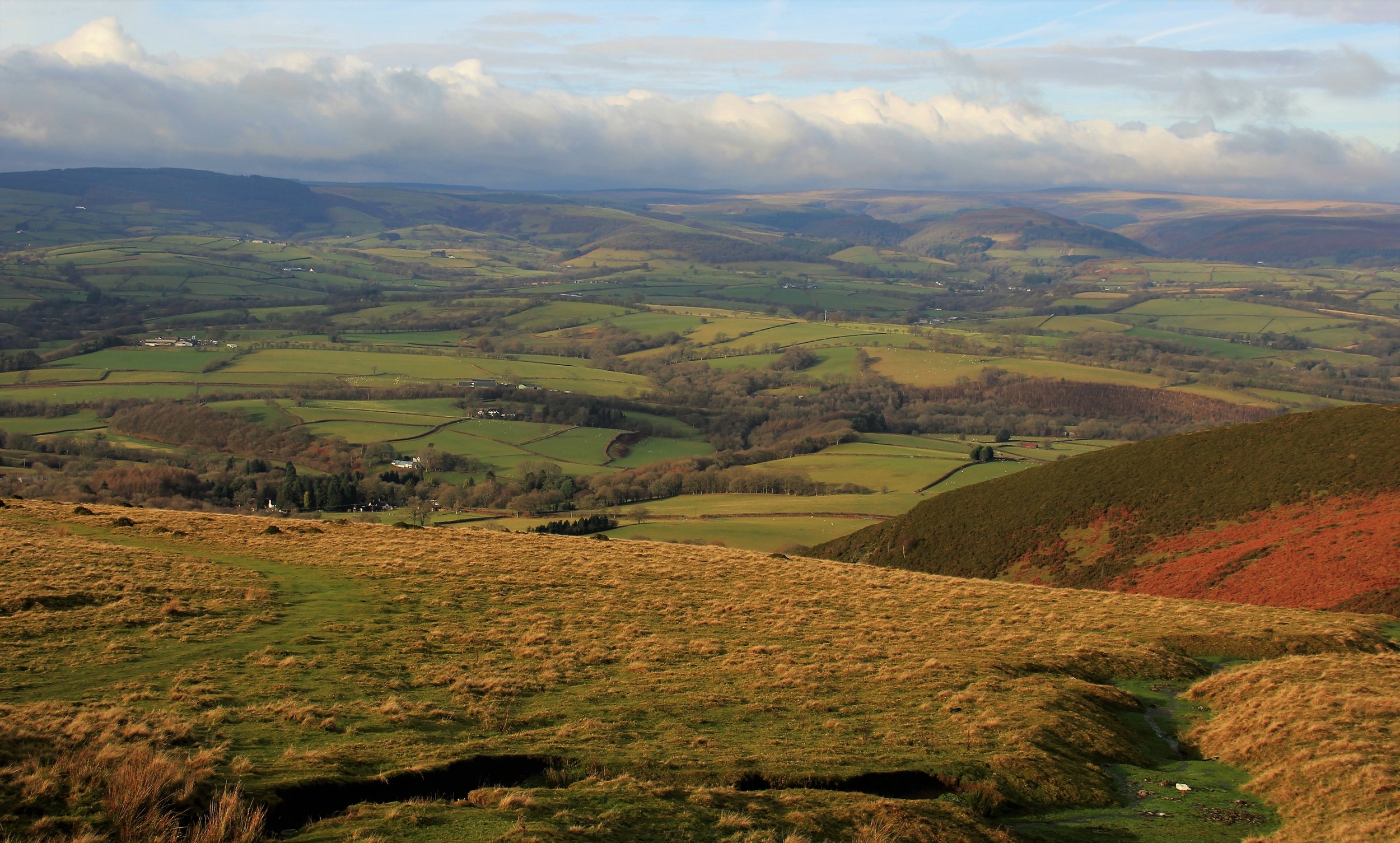
Walking
The Epynt Way takes the walker around the edge of Mynydd Epynt and Mynydd Bwlch y Groes. It crosses sections of high moorland and deep river valleys, affording stunning views at various points across the Black Mountains, Cambrian Mountains, Brecon Beacons and Carmarthen Fans.
The walk is divided into 8 sections. It is marked with frequent yellow topped posts , bearing the Epynt Way logo. Each post has a number tag to aid navigation. Posts are evenly spaced but, from time to time, they can be obscured by bracken or knocked over by enthusiastic sheep. Walkers must carry maps and not rely on the yellow topped posts. Please report any issues with posts using the form on this website.
The path makes its way along sheep tracks, drove routes , forestry tracks and some short sections of minor roads. These routes are testament to the long human history of the area as well as to the modern day uses. Today the walker will pass the enigmatic earthwork of Clawdd Brythonig (of disputed origin) as well as the remains of farmsteads that once housed a vibrant Welsh speaking community. The Epynt Way Visitor Centre is an excellent place to read about the area’s history, natural history and geology. Parking and toilets can also be found here.
The moorland sections can be boggy at times but the path has been carefully planned to avoid the wettest areas, so keep close to the yellow topped posts. Do not be tempted to take a short cut even if the route looks shorter.
The path is crossed by several mountain streams including Duhonw, Nant Gwennol, Nant Eithrim, Nant Cilieni and Nant Bran to name just a few. Horse riders are advised to avoid any steep gullies and follow the relevant waymarking. These diversions can be used by walkers wishing to avoid the gullies.
The Epynt Way is a walk for all seasons In spring woodlands are alive with birds including redstarts, pied flycatchers and many types of warbler and cuckoos are a regular sight and sound. In summer the yellow flag irises bring a splash of colour to marshy ground and in autumn there are many types of fungi, including some rarities. Winter brings its own delights including flocks of fieldfare and redwing that migrate here from Scandinavia.
Maps and descriptions of 5 circular walks can be accessed through this website. These have been planned to afford access to different sections of the Epynt Way and give an excellent introduction to the area. The circular walks are not waymarked with the Epynt Way logo.
For those who just want a taste of the Epynt Way there is a short (approximately 2 miles) walk waymarked (red tops) from the Visitor Centre. Another short walk from the Centre leads to a viewpoint and picnic benches.
View Circular Routes




